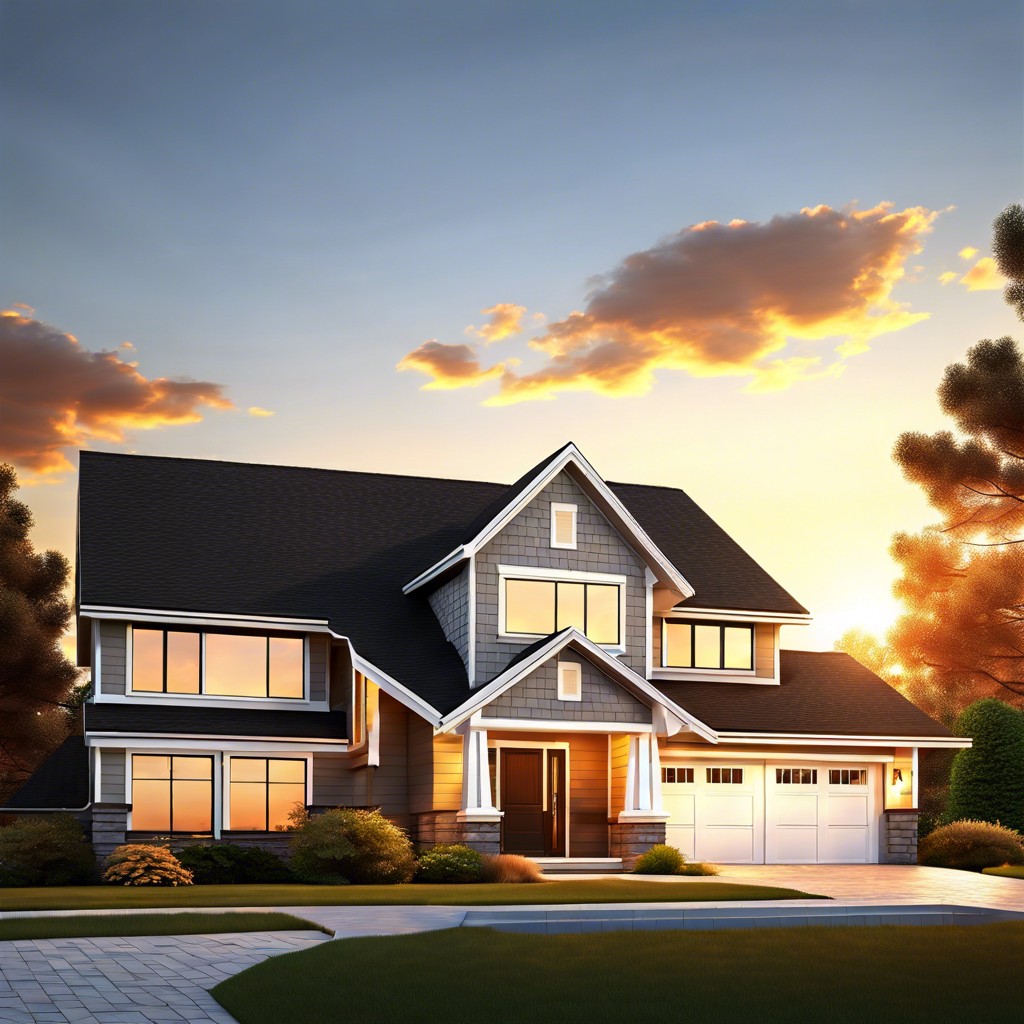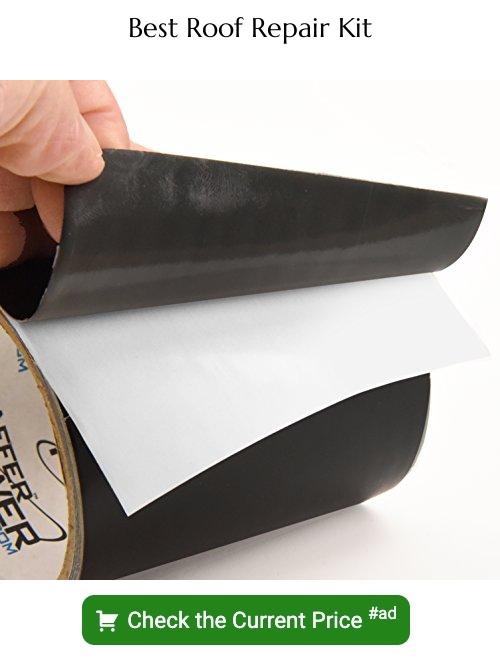Last updated on
This article provides a comprehensive guide to understanding the typical lifespan of various roofing materials and factors that can influence the longevity of your roof.
Key takeaways:
- Asphalt shingles last 15-30 years, metal roofs 40-70 years.
- Slate, tile, concrete roofs last 50-100 years.
- Wood shingles last 20-40 years, require more maintenance.
- Synthetic roofing materials offer up to 50-year lifespan.
- Rubber roofing lasts 30-50 years, low maintenance, for flat roofs.
How Long a Roof Lasts By Type

The lifespan of a roof is greatly determined by the material it is made of. Asphalt shingles, the most commonly used roofing material in the United States, typically offer a life expectancy of 15 to 30 years. Architectural asphalt shingles are at the higher end of this range due to their added durability.
Metal roofs, known for their longevity and resistance to extreme weather, can last between 40 to 70 years. Metal options include steel, aluminum, and copper, each with varying lifespans.
Slate, tile, and concrete roofs are among the most durable choices, with lifespans of 50 to 100 years or more. Their resilience makes them suitable for regions with severe weather conditions; however, installation and material costs are higher.
Wood shingles and shakes have a rustic appeal and provide a lifespan of around 20 to 40 years. It’s important to note that wood roofing requires more maintenance to prevent issues such as rot or insect infestation.
Synthetic roofing materials, a newer option on the market, mimic the look of natural materials and offer varied life expectancies. Manufacturers claim lifespans of up to 50 years, but as these products are relatively new, long-term data on durability is still accumulating.
Lastly, rubber roofing, particularly favored for flat roofs, can last 30 to 50 years with proper installation and maintenance. It is valued for its resistance to extreme weather and low maintenance requirements.
Factors That Influence How Long a Roof Lasts
Several elements affect the lifespan of a roof, shaping its durability and the need for maintenance or replacement over time.
Climate plays a pivotal role, as severe weather conditions such as hurricanes, hail, and drastic temperature swings can compromise a roof’s integrity. Additionally, prolonged exposure to direct sunlight can deteriorate roofing materials through UV radiation.
Material quality and type are also determinants; for instance, asphalt shingles typically last up to 20 years, while metal roofing can exceed 50 years. The longevity of roofing materials varies widely, with options like slate and tile offering potentially a century of service if properly maintained.
Proper installation is critical; a roof installed with meticulous attention to detail and adherence to best practices is more likely to achieve its maximum potential lifespan. Conversely, subpar workmanship can lead to early failures and water damage.
Maintenance frequency is yet another vital component. Regular inspections and addressing minor repairs swiftly can prevent small issues from escalating into costly problems, thereby extending the roof’s life.
Ventilation and insulation are often overlooked but are essential in preventing heat and moisture buildup that can weaken a roof from within, leading to issues such as mold, rot, and a decrease in the overall lifespan of the roof.
Lastly, the slope or pitch of the roof affects its ability to shed water and snow, with steeper roofs generally providing better run-off and hence, experiencing less water-induced wear and tear.
How To Make Your Roof Last Longer
Regular inspections are essential. Have a professional roofer inspect your roof at least once a year to catch and fix small issues before they evolve into more significant problems.
Keep it clean. Remove debris, such as fallen leaves and branches, which can retain moisture and lead to rot or mold growth. This is especially important for flat roofs, where water pooling can cause deterioration.
Address leaks immediately. Water damage can rapidly compromise a roof’s integrity. Fixing leaks as soon as they’re detected prevents further damage to both the roof and the underlying structures.
Ensure proper ventilation. A well-ventilated attic helps prevent the build-up of heat and moisture that can weaken the roof’s structure and reduce its lifespan.
Trim overhanging tree limbs. Branches that loom over your roof may drop debris or fall during a storm, potentially causing damage.
Control moss and algae growth. In damp climates, moss and algae can be a problem that eats away at roofing materials, especially wood and asphalt. Use products designed to kill moss, or install zinc strips to prevent its growth.
Improve insulation. Proper attic insulation can prevent a cycle of thawing and freezing that can damage your roof during winter months.
By following these maintenance tips, you can extend the life of your roof and safeguard against premature wear and tear.
Do Warranties Help With a Roof’s Life Expectancy?
Roofing warranties are essential in providing peace of mind. They typically come in two forms: manufacturer’s and workmanship warranties. Manufacturer’s warranties cover the roofing material against defects for a certain period, which can be anywhere from 20 to 50 years, depending on the material. It’s crucial to note that these warranties often require proper installation to remain valid, emphasizing the importance of hiring a reputable contractor.
Workmanship warranties, on the other hand, are provided by the roofing contractors and cover errors in the installation process. These generally last for a shorter duration, commonly around 5 to 10 years. Although these warranties do not extend the lifespan of your roof, they ensure recourse if issues arise due to material defects or installation errors.
To maintain warranty protection, follow guidelines for maintenance and care, which include regular inspections and prompt repairs. The existence of a warranty does not negate the need for consistent upkeep. Neglect can void a warranty, leaving the homeowner to cover repair or replacement costs.
Remember, while warranties offer a safety net, they do not predict or guarantee the actual lifespan of your roof. Environmental conditions, maintenance habits, and material quality are the prime determinants of your roof’s longevity.
When Should I Consider Roof Replacement?
Assessing your roof’s condition annually can signal when replacement is due. Visible cues like extensive shingle damage, sagging, or significant leaks suggest urgent replacement. Age is a critical factor; if your roof approaches or exceeds its expected lifespan, consider a proactive approach to replacement to avoid potential damage to the home’s structure or interior. Additionally, if your energy bills significantly increase, a deteriorated roof could be the cause, as it allows heat to escape, diminishing energy efficiency. Lastly, if a significant storm damages a large area of your roof, repair costs may approach or exceed the price of a new roof, in which case replacement is often the more economical and practical choice.





